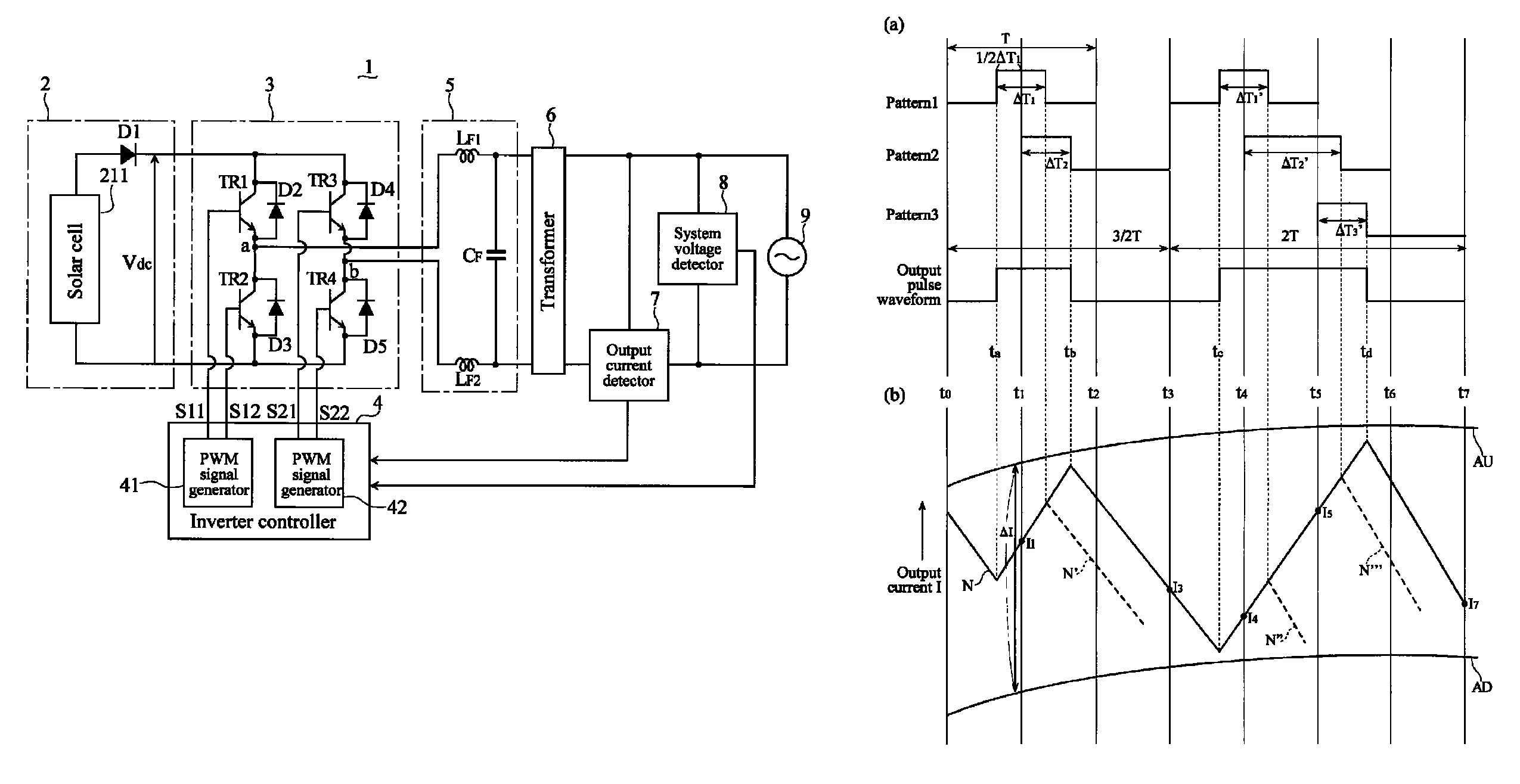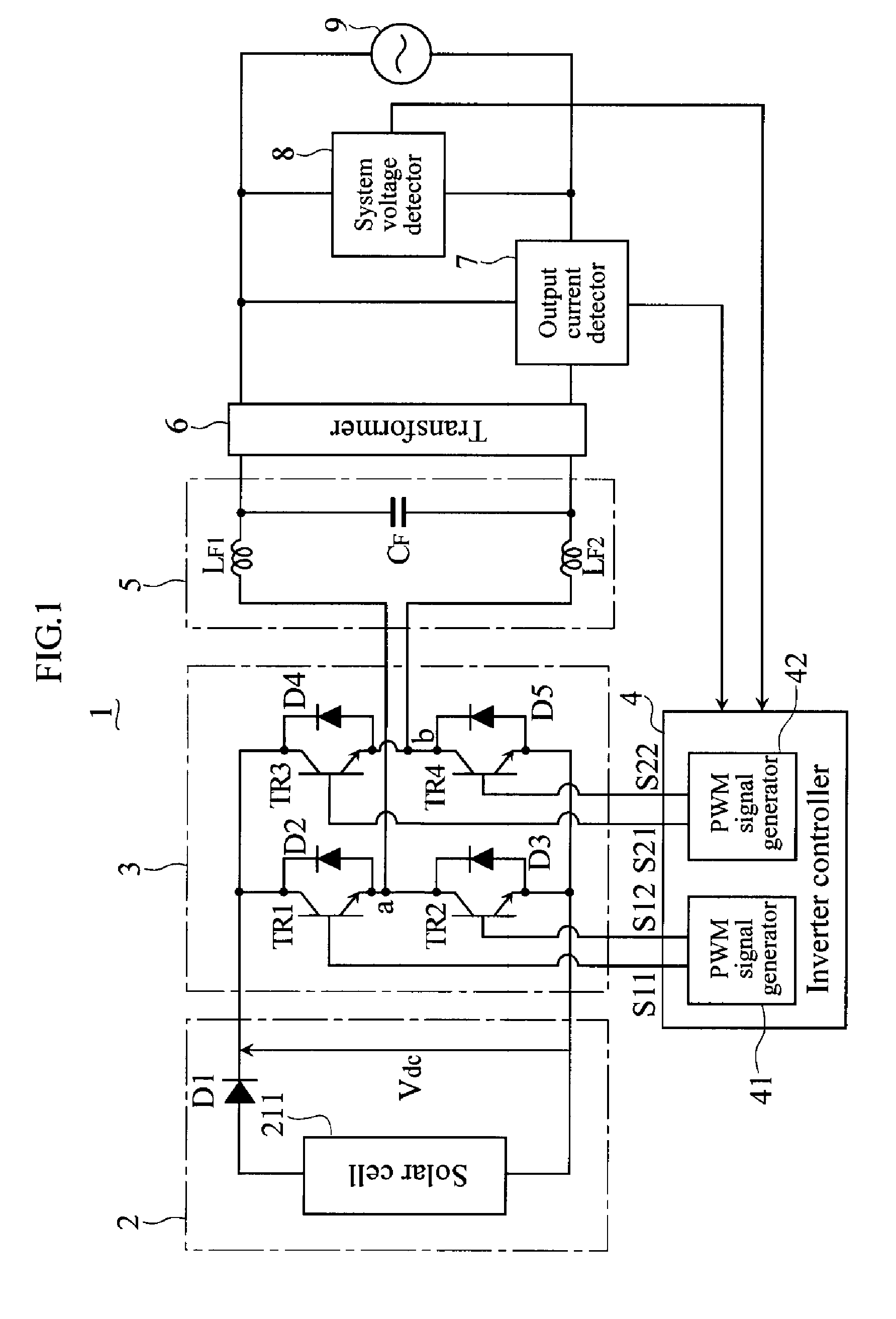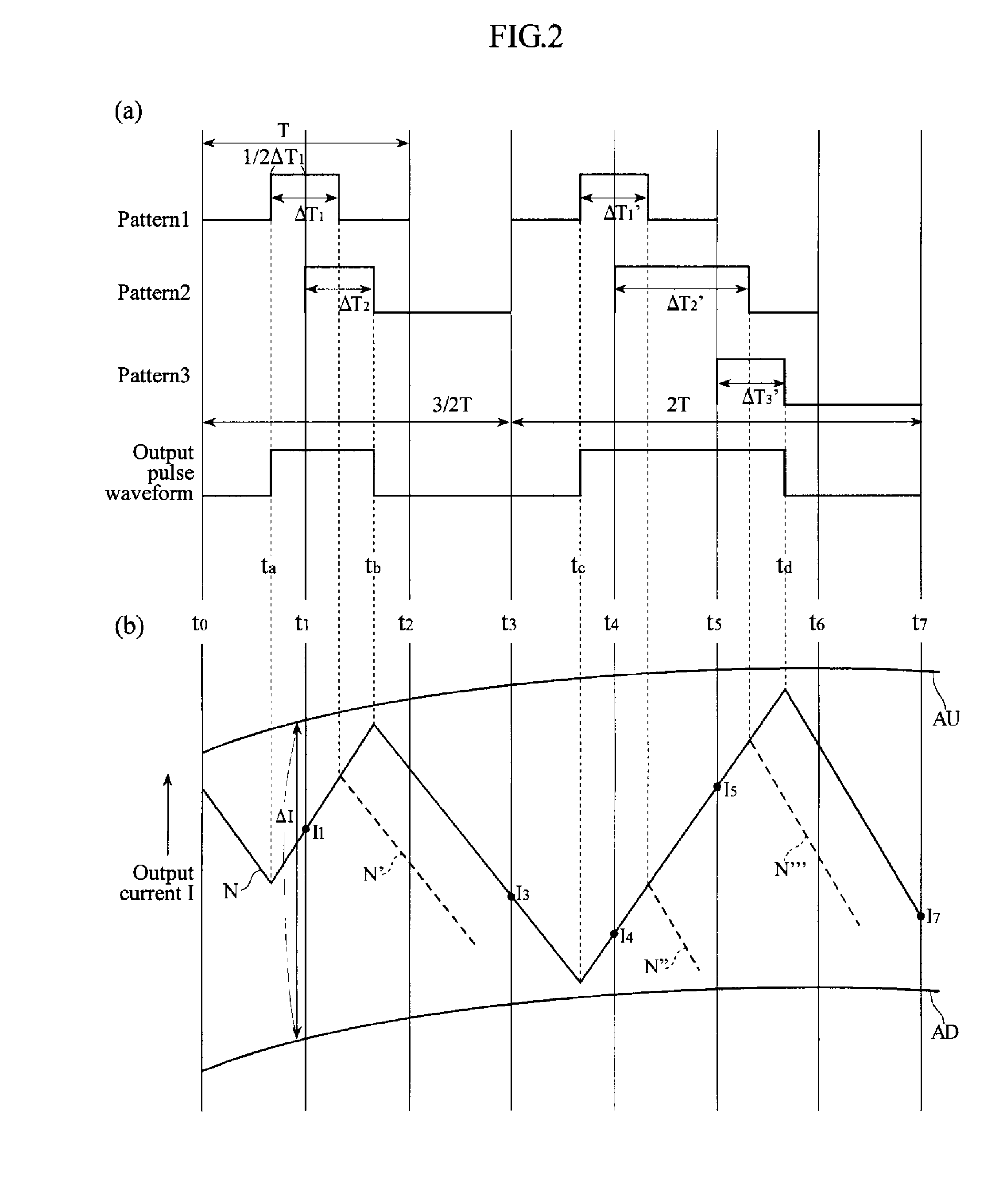PWM signal generator, and inverter equipped with this PWM signal generator
a technology of pwm signal generator and pwm signal, which is applied in the direction of pulse technique, process and machine control, instruments, etc., can solve the problems of difficult unit construction, inability to take advantage of good universality and flexibility in the design of the digital control system,
- Summary
- Abstract
- Description
- Claims
- Application Information
AI Technical Summary
Benefits of technology
Problems solved by technology
Method used
Image
Examples
first embodiment
[0077]The method for generating the PWM signals generated by the inverter controller 4 will now be described in detail with reference to FIGS. 2 and 3. The following is a description of a first embodiment in which the previously determined pulse waveform is A type, the pulse waveform determined by recalculation is B type, the periods of the pulse waveforms are the same, the position of the on-duration of the previously determined pulse waveform is disposed in the middle of the period, and the timing of the recalculation is in the middle of the period of the previously determined pulse waveform.
[0078]FIG. 2 is a diagram illustrating the method for generating the PWM signal that is generated by the inverter controller 4. FIG. 2(a) is a waveform diagram showing how two kinds of pulse waveform are combined into an output pulse waveform. FIG. 2(b) is a diagram showing the relation between the output pulse waveform and the output current I of the inverter circuit 3, and corresponds to FIG...
second embodiment
[0175]FIG. 9 is a diagram illustrating a case of the first pulse waveform in which the on-duration is shifted from the middle of one period (hereinafter this case will be referred to as the “second embodiment”).
[0176]As shown in FIG. 9(a), the first pulse waveform is generated as a pulse waveform in which the middle of the on-duration of the first on-time ΔT1 is located at (⅓)·T. This first pulse waveform comes on after the elapse of the time {(⅓)·T−(½)·ΔT1} since the time instant at which the first on-time ΔT1 was computed (the time instant at the start of one period T), and goes off after the elapse of the time {(⅓)·T−(½)·ΔT1}. Here again, the second on-time ΔT2 is computed for when T is one period after the elapse of the time (½)·T.
[0177]FIG. 9(b) shows a second pulse waveform having the on-duration of the second on-time ΔT2. This second pulse waveform comes on at the time instant at which the second on-time ΔT2 was calculated (the time instant of (½)·T in one period T), and goes...
third embodiment
[0184]FIG. 10 is a diagram illustrating when the calculation of the second on-time ΔT2 is performed at a predetermined timing since the calculation of the first on-time ΔT1 (hereinafter referred to as the “third embodiment”).
[0185]FIG. 10(a) shows a first pulse waveform having an on-duration of the first on-time ΔT1 in which the pulse waveform is such that the on-duration is located in the middle of one period. This first pulse waveform comes on after the elapse of the time (½)·(T−ΔT1) since the time instant at which the first on-time ΔT1 was computed (the time instant at the start of the period T of the first pulse waveform), and goes off after the elapse of the time (½)·(T+ΔT1).
[0186]In this example, the second on-time ΔT2 is computed for when T is used as one period after the elapse of the time (⅓)·T since the time instant at the start of the period T of the first pulse waveform. FIG. 10(b) shows a second pulse waveform having an on-duration of the second on-time ΔT2. This second...
PUM
 Login to View More
Login to View More Abstract
Description
Claims
Application Information
 Login to View More
Login to View More - R&D
- Intellectual Property
- Life Sciences
- Materials
- Tech Scout
- Unparalleled Data Quality
- Higher Quality Content
- 60% Fewer Hallucinations
Browse by: Latest US Patents, China's latest patents, Technical Efficacy Thesaurus, Application Domain, Technology Topic, Popular Technical Reports.
© 2025 PatSnap. All rights reserved.Legal|Privacy policy|Modern Slavery Act Transparency Statement|Sitemap|About US| Contact US: help@patsnap.com



